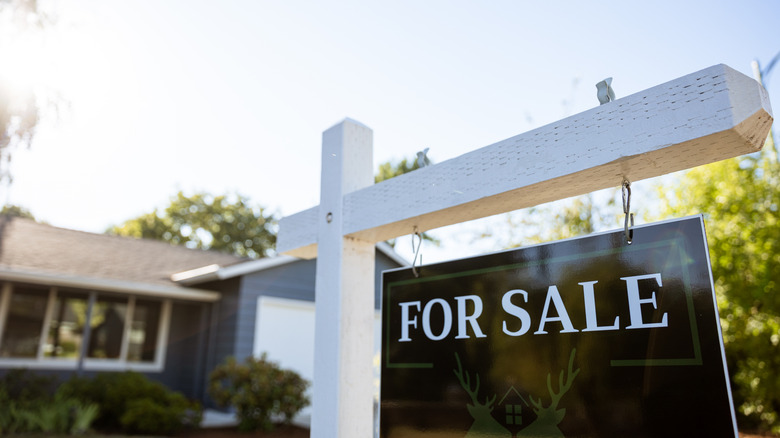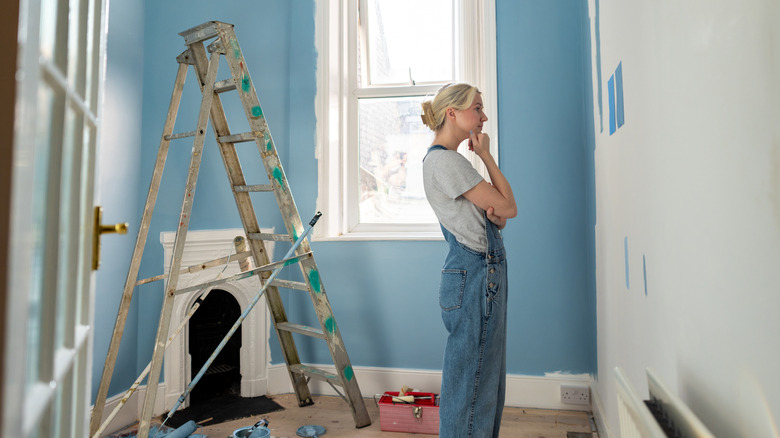Homes Built During These Decades Are The Most Valuable
Purchasing a home is a major undertaking, and unsurprisingly, one of the biggest purchases most people will make in their lifetime. So if and when you do make the leap into homeownership, you want to be sure you're spending your money wisely and committing to something that will be a worthwhile investment. Are you wondering which type of house is the most valuable? According to a BPInsights evaluation of average home values and features by decade, homes built within the last 10 years tend to be the most valuable, with an average value of $456,968. This certainly makes sense for a number of reasons; newer homes tend to be more energy efficient, and have all the modern luxuries and amenities that many homeowners have come to expect — such as central air conditioning and a generous open-floor plan with lots of natural light.
On the other end of the spectrum, older, historic homes — those built before 1939 — are also considered desirable to many buyers and tend to have the second-highest home value, with an average home value of $333,852. While older homes likely require more upgrades and maintenance, they have a charm and character that many cookie-cutter newer builds lack, which a number of potential homebuyers want. Plus, older homes are often located in town centers, giving them a prime location and convenience.
Mid-century homes — those built during the 1940s to 1970s — tend to be the least valuable homes on the market. That's because these homes were often built quickly in the aftermath of World War 2, making them less sturdy and, in some instances, less safe. They are also usually not modern enough to meet the demands of many homebuyers.
Ways to increase your home's value, no matter when it was built
If you don't have the good fortune of owning either a new build or a historic home — or if you do and still want to get the most bang for your buck — there are plenty of ways to increase your current home's value. While it may require some money up front, you're likely to see a return on that investment in the long run. The kitchen and bathroom are two rooms where even small renovations costing a few hundred dollars can offer major returns. A new vanity in the bathroom, for example, or a new backsplash or appliance in the kitchen will almost always be a worthy investment. However, when doing kitchen updates, keep in mind that a white kitchen might actually decrease the value of your home by a few hundred dollars. Buyers are more willing to shell out for homes with gray kitchens than for that all-white aesthetic that was popular for so long.
Properly utilizing your existing space can also make a big difference. With remote work on the rise, carving out an area in your house that's designated as a home office can boost your house's resale value by up to 10%. And don't skimp on exterior renovations, which can majorly boost a home's curb appeal, demonstrate that the house has been well maintained and cared for, and subsequently increase your home's value. Replacing old garage doors and entry doors, for example, can not only upgrade the look of your home but also improve security and energy efficiency. But elevating your home's exterior or interior look and value doesn't necessarily need to be a costly endeavor. Even something as simple as a new coat of paint can make a huge difference to potential buyers.

